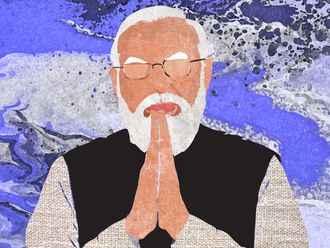
Zika, Sars, Ebola. Whenever you read of a virus in the media, your flesh creeps with news of a deadly epidemic in some part of the world. But there is one terrible disease that has a mercifully low profile these days, even though it once crippled or killed hundreds of thousands of people every year. The imminent defeat of polio is one of the world’s great unsung success stories. True enough, two new cases of the virus were recorded in Nigeria last Thursday. Yet, the most remarkable feature of that event was its rarity. It will come as no comfort for the two children who are suffering, but the truth is that they are the first Nigerians to catch polio in two years.
Once, polio infected tens of thousands of their compatriots every year, attacking the body’s central nervous system and causing paralysis, deformity or death. Today, polio is so rare in Nigeria that two cases will make the news. Here are the essential numbers. In 1988, people were suffering from polio in 125 countries; today, there are only three where the virus remains endemic. Back then, 350,000 human beings caught polio. So far this year, only 21 people in the entire world are known to have fallen prey. How has this been achieved?
The answer is that a global eradication campaign has immunised no fewer than 2.5 billion children. Their work goes largely unreported, but health workers in every country have been fanning out across towns and villages, administering life-saving droplets even in the world’s most remote corners. The result is that polio has been vanquished almost everywhere. Today, the virus has one last stronghold in Afghanistan and Pakistan, along with a more tenuous foothold in Nigeria. How polio somehow holds out in these places is explained by the fate of brave health workers who administer the vaccine.
Saving children from a terrible disease can be a particularly dangerous occupation in Pakistan, where the Taliban spreads poisonous whispers that the vaccine is actually an American plot to make Muslims infertile — or a devious way of spreading Aids. In April, seven Pakistani policemen were ambushed and shot dead as they guarded health workers delivering the polio vaccine in Karachi. No fewer than 89 people were murdered for the crime of trying to immunise children in Pakistan in 2014. The gunmen of Boko Haram pose a similar threat in northern Nigeria, helping to explain the two recent cases. This miasma of local conspiracy theories about the vaccine is all that keeps polio alive. But there is still good news. Despite Boko Haram’s best efforts, vaccinations are widely accepted across Nigeria.
“There are those who still resist the vaccine in pockets, but it’s not enough to keep the disease going,” explains Dr Adam Ritchie, a lecturer in science and public policy from the Blavatnik School of Government in Oxford. “I wouldn’t say the war is over, but the main part of the battle in Nigeria has been won.”
Winning over those who once damned the vaccine was a delicate business. The Global Polio Eradication Initiative, which runs the immunisation campaign, is a partnership between the United Nations and national governments. Its chosen approach in Nigeria was not to condemn but to reassure. Muslim clerics were taken to see for themselves where the vaccines destined for Nigeria were produced, which happened to be in Indonesia, the world’s most populous Muslim country. They were reminded of how the droplets had already defeated polio in a string of Muslim states. In this way, their suspicions were gradually worn down. Whether the same methods would stand any chance in Pakistan or Afghanistan is open to question.
The fact that most of Afghanistan is still at war — and there is an Islamist insurgency on the north-west frontier of Pakistan — presents a physical barrier to the vaccination campaign. In other conflict zones, armies and rebel movements alike have agreed to stop shooting while health workers immunise children.
When five national armies and umpteen insurgents fought one another in the Democratic Republic of Congo in 1999, all the belligerents agreed to a seven-day ceasefire to allow vaccinations to take place. But few expect the Taliban to show similar restraint. The target is to vanquish the virus forever by 2019 and the last obstacle is suspicion and conspiracy theory.
— The Telegraph Group Limited, London, 2016
David Blair is the chief foreign correspondent with the Daily Telegraph.











